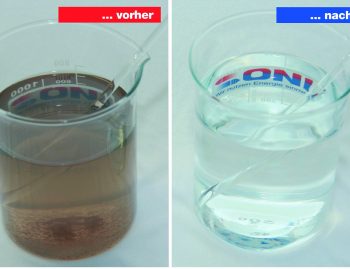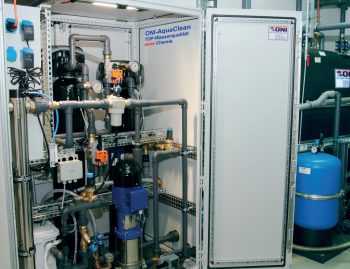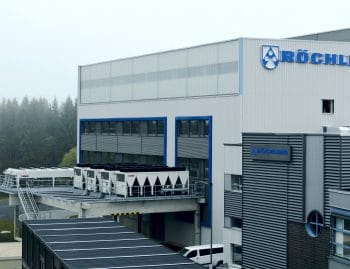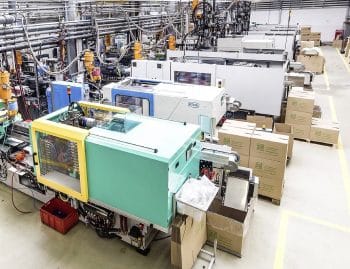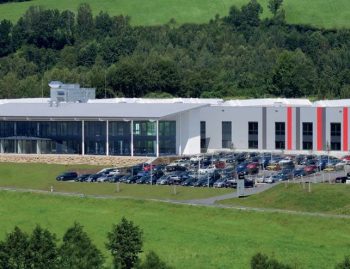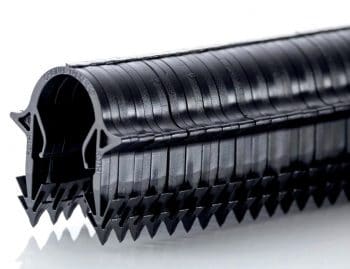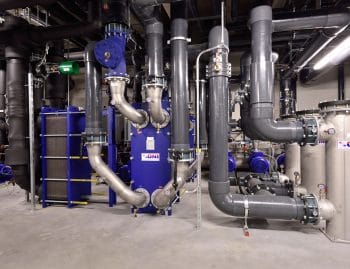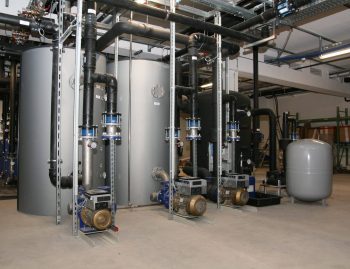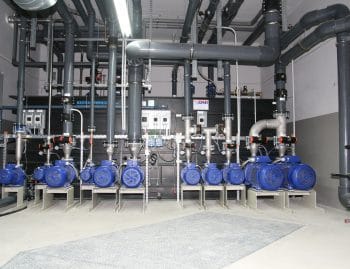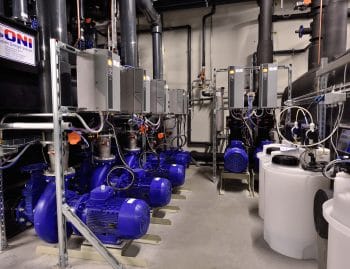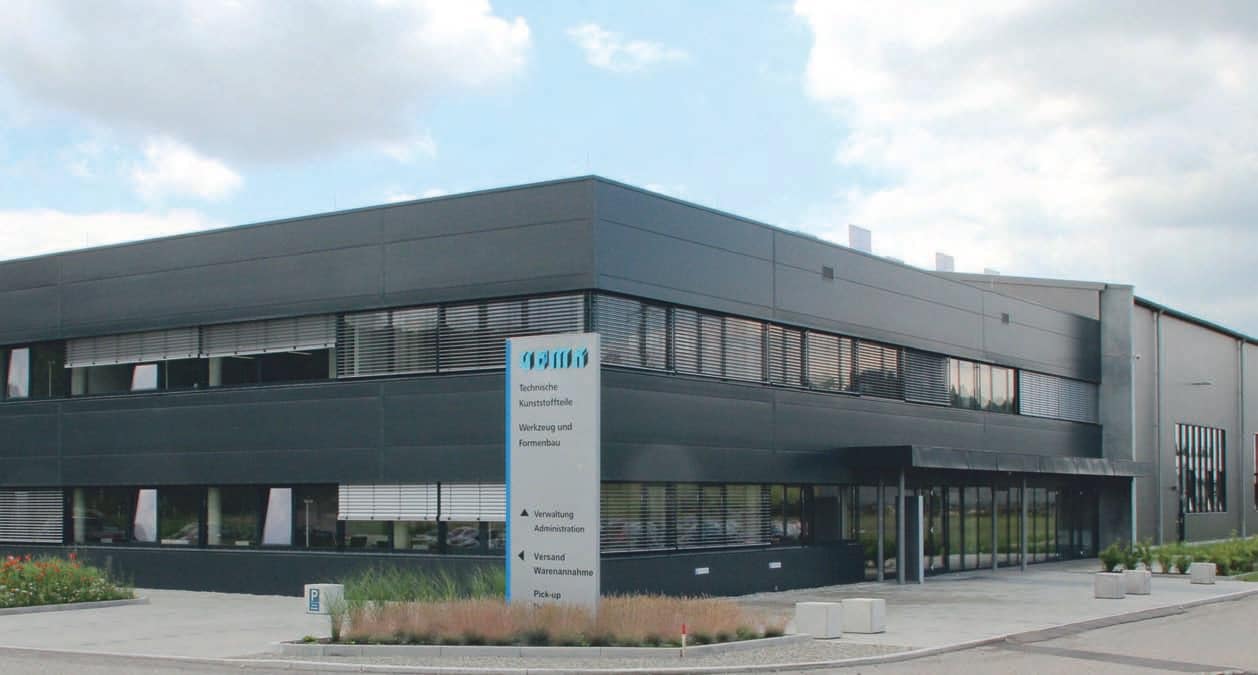
With complete solutions from a single source - from product development to toolmaking to highly specialised manufacturing processes - VEMA has achieved a very good market position in various industrial sectors as an innovative plastics system partner. Successful in its core business for many years, the company has also set new standards in terms of energy efficiency and environmental awareness.
VEMA GmbH in Krauchenwies-Göggingen, with its Tool and Mould Making and Technical Plastic Parts divisions, is one of the top addresses for discerning customers. The international customer spectrum ranges from the automotive industry to sanitary, measuring and medical technology. "With our competence, reliability and flexibility we strengthen the innovative strength of our customers and thereby create a trusting cooperation which is the basis for a continuous expansion of our national and international business relations", explains Werner Veser, managing partner.
The company's development is reflected in a steadily growing number of employees and the new company building that was built on a greenfield site in 2012. On a total area of approximately 6000 square meters, the tool shop equipped with state-of-the-art processing machines, the plastic injection moulding shop with 30 high-performance injection moulding machines and the administration have found a new home. In terms of energy optimization, a holistic concept was implemented that is exemplary for energy-intensive companies. "With the new building and the operating technology installed in it, we wanted to show that as an energy-intensive company, we can do a lot to reduce energy costs and environmental pollution to a minimum value in the long term," says Christian Veser, describing the intention of the company management with regard to the energy orientation of the new building. "For this reason, we brought in the experts from ONI-Wärmetrafo GmbH for the planning and implementation of the energy concept, who were able to convince us by means of reference plants and a conclusive concept tailored to our situation.
Against the background of continuously rising energy costs, every plant operator today is interested in reducing his energy consumption as much as possible. The only question is how and at what cost? At first glance, the system orientation of the energy technology is somewhat easier when it comes to a new building. Thanks to the experience VEMA has gathered itself, it has oriented itself in the right direction. The basic concept was designed in such a way that cooling energy generation is ideally adapted to the operating situation and outside temperature and the energy used is reused several times.
Everything in one circle
High-quality plastic products such as design parts, optical and visible parts are produced on around 30 plastic processing machines with clamping forces ranging from 250 to 2500 kilonewtons. The year-round reliable supply of cooling water at a stable temperature level, both for the drive units of the machines and for the complex mold systems, in order to ensure a process-adapted mold surface temperature, is of essential importance for the production process. Instead of the cooling tower systems previously used, which caused problems in the cooling water quality as well as complex handling of chemicals, VEMA uses idle free coolers for the cooling water supply of these areas. These recooling units convince with their optimum power adjustment to the actual power requirement and consume extremely little electricity. The units equipped with a so-called adiabatic system are able to ensure the cooling water supply in summer even at higher outside temperatures. A special plus of this free cooler system used by ONI is the absence of glycol. Glycol is considered to be a substance hazardous to water and requires special safety measures with regard to the Water Resources Act. These glycol-free systems were chosen in order to avoid this problem from the outset and to avoid unnecessarily burdening the plant operator.
Security of supply guaranteed
Compliance with delivery obligations is an essential demand made by customers on their suppliers. Especially when parts have to be delivered just-in-time or just-in-sequence, this demand is given special emphasis. In order to be prepared for all eventualities, VEMA therefore planned a cistern cooling system parallel to the recooling system with glycol-free free coolers. This not only creates performance redundancy, but also the possibility of covering peak loads or cooling loads at extreme outside temperatures.
In addition, the cistern cooling also offers a pleasant side effect. In the case of massive solar radiation and high outside temperatures over several days, even the best thermal insulation is not able to keep the outside heat out of the building. In this case, cistern cooling is used to bring company areas to a temperature level where concentrated work is possible.
Cooling saves heating costs
In order to heat a company with several thousand square meters of production, office and storage space in the transition and winter months and to provide year-round heated drinking water for showers and washbasins, a lot of natural gas or fuel oil is usually required. The heating energy consumption and the resulting operating costs are therefore not insignificant. In addition, a boiler house with boiler, burner and flue gas system is required for this heat generator system. Thanks to the heating energy supply concept developed by ONI, the energy used once at the Krauchenwies-Göggingen site is simply used a second time. This not only saves a great deal of energy, but also eliminates the need to invest in a boiler house. "We have waste heat from a wide variety of areas at our disposal, but have not used it in the past. With the new heating concept we turned the past situation around 180 degrees and the result is overwhelming even for us , commentated Christian Veser the obtained saving potential from the waste heat use.
The new heating energy concept for VEMA is based on the use of waste heat from the cooling of injection moulding machines and moulds at a temperature level of 35 and from compressed air generation at around 70 degrees Celsius. Even today, many industrial companies simply dissipate this waste heat unused into the atmosphere via recooling systems, causing unnecessary environmental pollution.
VEMA, on the other hand, uses the temperature level of 35 degrees Celsius in the cooling circuit return flow of the machines and tools to heat offices and storage areas. Thanks to special halls and office heaters as well as an underfloor heating system from ONI, this temperature level is completely sufficient to ensure adequate heating of all operating areas during the heating period, even at extreme outside temperatures.
Low-temperature heating technology also has an additional positive effect that should not be underestimated. Office and hall heaters are able to achieve an ideal temperature distribution in the room. The relatively small temperature difference between heating heat outlet and room air temperature leads to the best possible homogeneous mixing in the room and a pleasant room climate in comparison to often used high-temperature heating systems. Storage or flow-through systems that are supplied with heating water flow temperatures of 70 degrees Celsius and more are necessary for the hygienically perfect, central drinking water supply. If consumption peaks are to be expected in shift operation, however, the so-called flow-through systems are forbidden due to the high connected loads. In any case, however, the supply of such drinking water systems requires heating heat suppliers who have to work in priority mode in order to be able to supply the required flow temperatures. Experience has shown, however, that such heating utilities work with an extremely poor degree of efficiency over the year, which in many cases is less than 50 percent.
VEMA uses the waste heat from compressed air generation instead of a boiler or a heating boiler to heat drinking water, because cooling water with a temperature of just over 70 degrees Celsius is available all year round from the cooling of the compressed air compressors!
At VEMA, more than 200 kilowatts of usable waste heat output are permanently available for heating purposes from the various areas during the production times of three-shift operation. This waste heat utilisation has a financially interesting double benefit for the operator. Waste heat, which previously had to be recooled at high cost, becomes free heating energy thanks to ONI technology and massively reduces heating costs, which is particularly valuable in times of rising energy costs. In addition, the energy required to operate the recooling units is massively reduced, at least during the heating period. Trust is good, control is better. Most of us certainly know this saying, as it simply reflects the life experience that one may have had in one or the other case. Plausible economic efficiency calculations and exemplary reference projects can certainly be used to make decisions, but it is nice to be able to check the predicted savings results and the operating situation of the plant technology at a glance. In the case of VEMA, the company's management wanted exactly this opportunity to be able to evaluate their decision in favour of an energy-optimised plant afterwards.
Therefore, a control system was installed in which all relevant plant data converge and are evaluated and operating states are visualized. The focus is on a PLC module with an energy-optimising ONI system software developed by ONI which, as a dynamic management system, takes over the organisation of the energy supply at VEMA. This is where all information on the system statuses of the entire plant converge, are evaluated, and from here the essential system components receive all the necessary commands. For example, the control system immediately detects when a peak load makes it necessary to switch on the cistern cooling system or in which area waste heat can be used. This ensures that at each hour only the primary energy input is operated that is absolutely necessary. If heating is required in a company area, the corresponding output from the machine cooling circuit is made available. The resulting reduction in recooling capacity then results in a reduction in the free cooler capacity, which also saves electricity.
"With the ONI experts, we've got the right partners on board to ensure an optimal energy supply for our company from an economic point of view. We ourselves were surprised at the extent to which energy consumption can be reduced with an optimized energy system. In our opinion, our holistically optimized energy concept created the best possible starting point for us to be able to continue generating energy in a particularly economical and thus cost-saving way in the future. As a result, we expect the company to continue to grow in the future and have therefore opted for a modular energy system. This system structure creates the possibility of being able to make performance adjustments at any time, which result from an expansion of production," is the concluding conclusion of Werner and Christian Veser on the implemented energy concept at VEMA.





